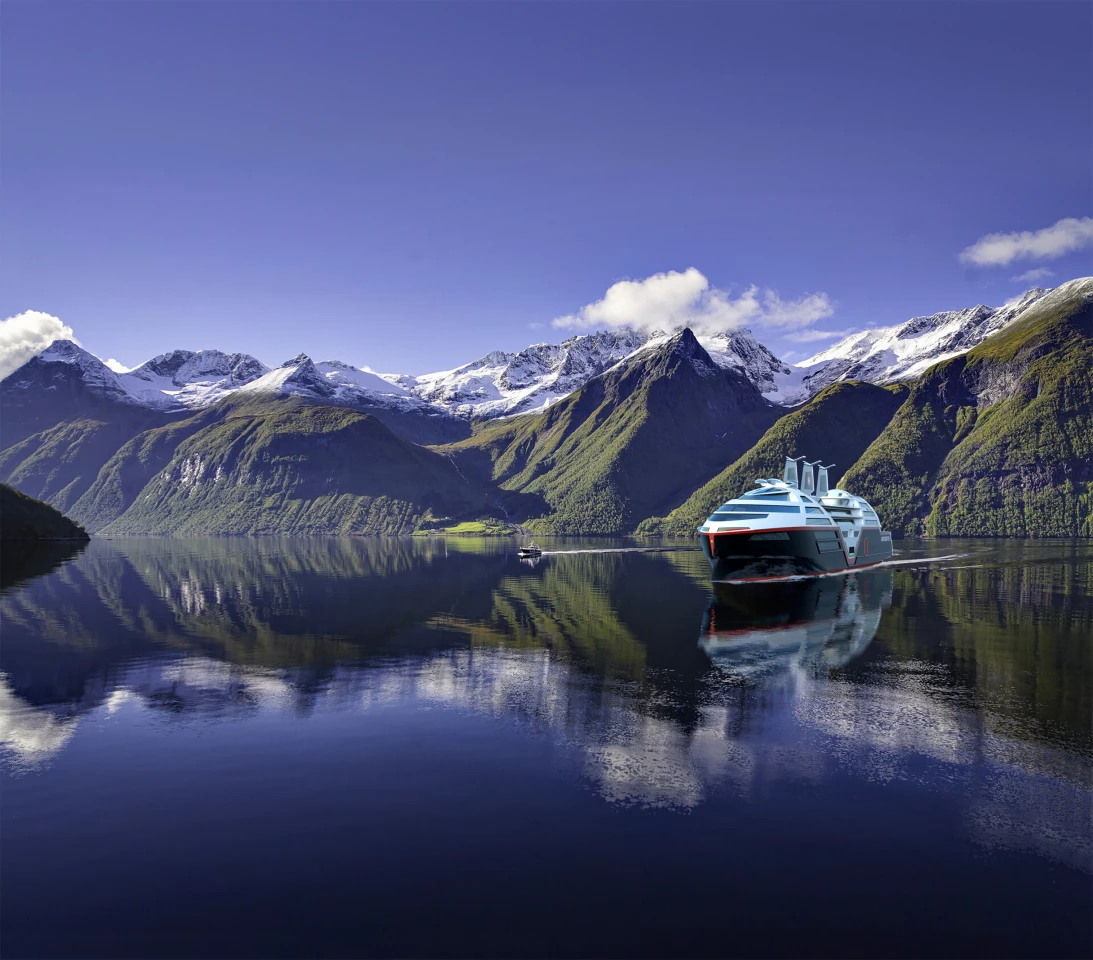To mark its 130th anniversary, Oslo-based cruise and ferry company Hurtigruten Norway has released its concept of the eco-friendly cruise ship of tomorrow. Called Sea Zero, it would use a raft of new technologies, including battery-powered propulsion and artificial intelligence, for zero-emission marine travel.
Despite the heavy impact of the recent pandemic, cruising remains a remarkably popular pastime, with an estimated 31 million passengers embarking on 302 ships this year. Unfortunately, most of these vessels run on heavy diesel fuel and can have a significant negative impact on the environment – especially when they operate in confined waterways like fjords or sensitive regions like Antarctica.
To reduce this impact, Hurtigruten Norway is looking to develop a sustainable zero-emission cruise ship to operate along the Norwegian coast by 2030 and eventually replace the company's entire cruise fleet.
With a projected length of 135 m (443 ft) that will carry 500 passengers in 270 cabins along with a crew of 99, Sea Zero looks like an updated version of an Art Deco ship that escaped from the drawing board of a 1930s industrial designer. Its streamlined hull conceals three retractable 50-m (164-ft) sails with a total surface area of 750 m² (8,073 ft²) to augment the shore-charged 60-megawatt-hour batteries that power the ship. In addition to providing clean propulsion, the autonomous sails are equipped with 1,500 m² (16,146 ft²) of solar panels.

Not quite as visually spectacular are the air lubrication, advanced hull coating, and proactive hull cleaning systems that reduce drag and increase efficiency as the Sea Zero slips through the water. However, if some passing flounder is curious about the state of the ship's batteries, there's a charge level indicator mounted outside the hull.
Other technical features include contra-rotating propellers and multiple retractable thrusters, but the party piece is the artificial intelligence system installed on the bridge that gives it a layout more like an aircraft cockpit than the control center of a 20th century transatlantic liner. This not only reduces the personnel needed to operate this ship, it can also learn the peculiarities of Norwegian ports, taking some of the burden off the harbor pilots.

Because a cruise ship is essentially a floating hotel with the accommodations consuming 50% of the available energy, Hurtigruten Norway has designed the passenger areas with a new ventilation system and will provide the passengers with an app to monitor their power and water consumption to reduce energy use in that area by half.
Since Hurtigruten Norway is a cargo company, the Sea Zero will be able to carry freight and a large number of cars as well as passengers. According to the company, the project will concentrate on technology development for the next two years, with an emphasis on battery production, propulsion technology, hull design, and sustainable practices that reduce energy consumption.
"When we initially announced the ‘Sea Zero’ project over a year ago, we were faced with the challenge of not knowing which technologies would be available to us in 2030," said Hedda Felin, the CEO of Hurtigruten Norway. "Our task was to pave the way for new innovations and enhance existing ones to align with our sustainability objectives. While some of these technologies have reached a relatively advanced stage, they still necessitate dedicated research and development to ensure successful implementation within the maritime context. On the other hand, certain technologies are still in early development and require fundamental research and thorough testing. Following a rigorous feasibility study, we have pinpointed the most promising technologies for our groundbreaking future cruise ships. We are committed to delivering a ship that surpasses all others in terms of energy efficiency and sustainability within just a few years."
The video below introduces Sea Zero.
Source: Hurtigruten Norway










